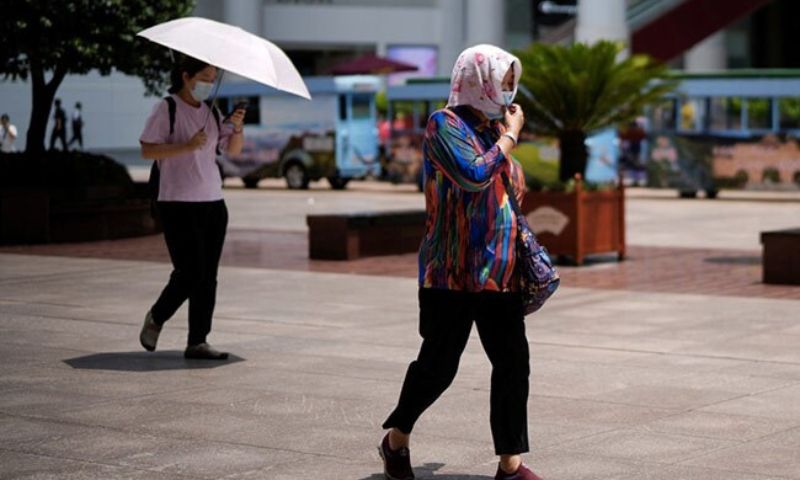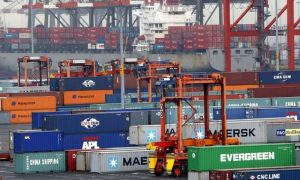Key points
- Pakistan is grappling with intense monsoon rains, bringing both relief and tragedy
- India’s Himachal Pradesh faces structural collapse and landslide threats after relentless rain
- China is battling a record-breaking heatwave, with temperatures nearing 40°C
ISLAMABAD: South and East Asia are currently facing a cascade of extreme weather events, from devastating monsoon rains in Pakistan and northern India to record-breaking heatwaves in eastern China.
As climate volatility intensifies, the region finds itself grappling with flash floods, infrastructure failures, and surging power demands, testing the limits of regional preparedness.
While scientists warn of the urgent need for climate-resilient infrastructure and disaster planning, millions continue to bear the brunt of nature’s fury in real time.
Monsoon hits Pakistan hard
In Pakistan, the monsoon has arrived in full force. The Pakistan Meteorological Department (PMD) reports that moist currents from the Arabian Sea and Bay of Bengal have begun surging into the northern and upper regions, accompanied by a westerly wave intensifying the rainfall.
Much of the country remained hot and humid on Monday. However, isolated rain and thunderstorms offered some relief in places like Kashmir, upper Punjab, the Potohar region, and upper Khyber Pakhtunkhwa. Tuesday’s forecast remains similar, with the potential for heavy downpours in select areas.
In the past 24 hours, heavy showers were recorded in Sheikhupura (35mm), Attock (34mm), and Kakul (26mm), while southern cities like Jacobabad and Sibbi boiled under 44 degrees centigrade (°C). Islamabad saw a mix of clouds and heat, with thunderstorms expected overnight into Tuesday, prompting flood warnings for low-lying areas.
Meanwhile, in Khyber Pakhtunkhwa, the monsoon’s fury has turned tragic. The search for Abdullah, a young boy swept away by the Swat River, has entered its fourth day. Rescue teams and local volunteers have recovered 12 bodies, while demolition of illegal encroachments along the riverbanks continues.
District Emergency Officer Rafiullah Marwat, talking to the media, said rescue operations are active across five key points along the river. Khyber Pakhtunkhwa government spokesperson Barrister Muhammad Ali Saif described the flooding as a “natural disaster,” adding that some encroachers had delayed evacuations by obtaining court stays.
“While we can attempt to save lives, such natural forces are beyond complete control,” he noted.
Landslides rock northern India
Just across the border, northern India is dealing with the dangerous consequences of heavy rainfall, especially in the fragile Himalayan terrain. In Shimla’s Bhatakufar area of Himachal Pradesh, a five-storey residential building collapsed on Monday morning following days of continuous rain.
Fortunately, the building had been evacuated the night before, sparing lives. Panic, however, has gripped the area.
Heatwave grips eastern China
Further east, China is battling a different kind of climate onslaught — a severe and prolonged heatwave that is pushing temperatures up to 40°C in major eastern cities like Shanghai, Nanjing, and Hangzhou.
According to the China Meteorological Administration, temperatures are expected to remain 2–3°C above average across much of the country during the first week of July. Government officials warn that the heat is straining power grids and threatening agricultural output, particularly in key rice-producing areas.
“Demand for electricity is soaring,” said a spokesperson for the National Development and Reform Commission. “This summer, peak electricity usage could be 100 gigawatts higher than last year — equal to the total output of the UK’s power grid.”
China has taken steps to mitigate power shortages after experiencing major blackouts earlier this decade. Massive coal stockpiles and an expansion in wind and solar energy have bolstered the grid’s resilience. But officials admit that extreme events — like typhoons, floods, or prolonged heat — could still tip the balance.
Heavy rain is forecast for southwestern and northeastern China this week, which may help lower temperatures slightly but could also lead to flash floods and landslides. Beijing is expected to see brief thunder showers, though high humidity will keep the discomfort levels elevated.
In the commodity markets, the heatwave has already driven up thermal coal prices, with traders anticipating a surge in electricity demand in the coming weeks.


























